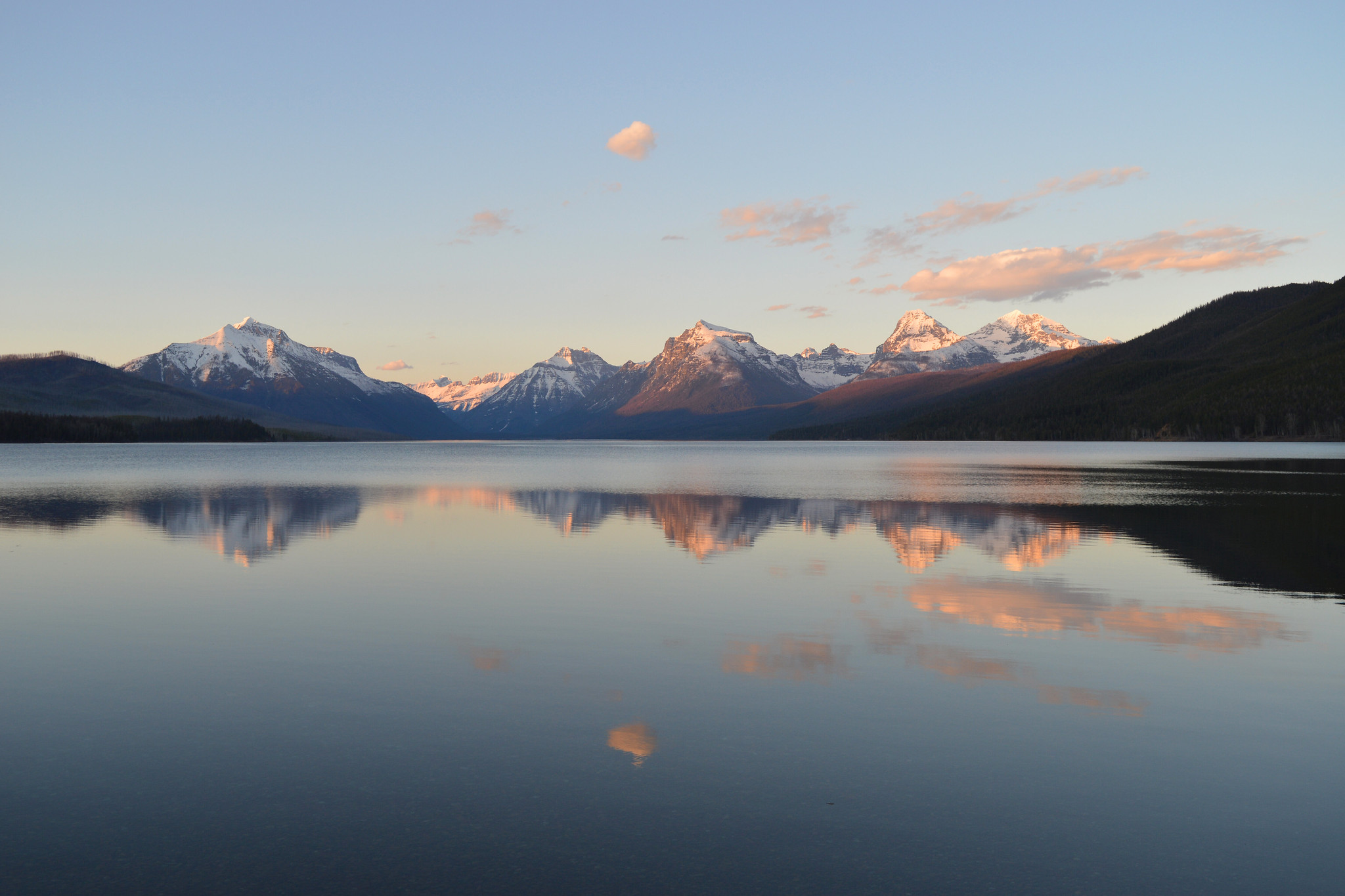To northwest Montana, water is perhaps the most vital and valuable natural resource. An understanding…
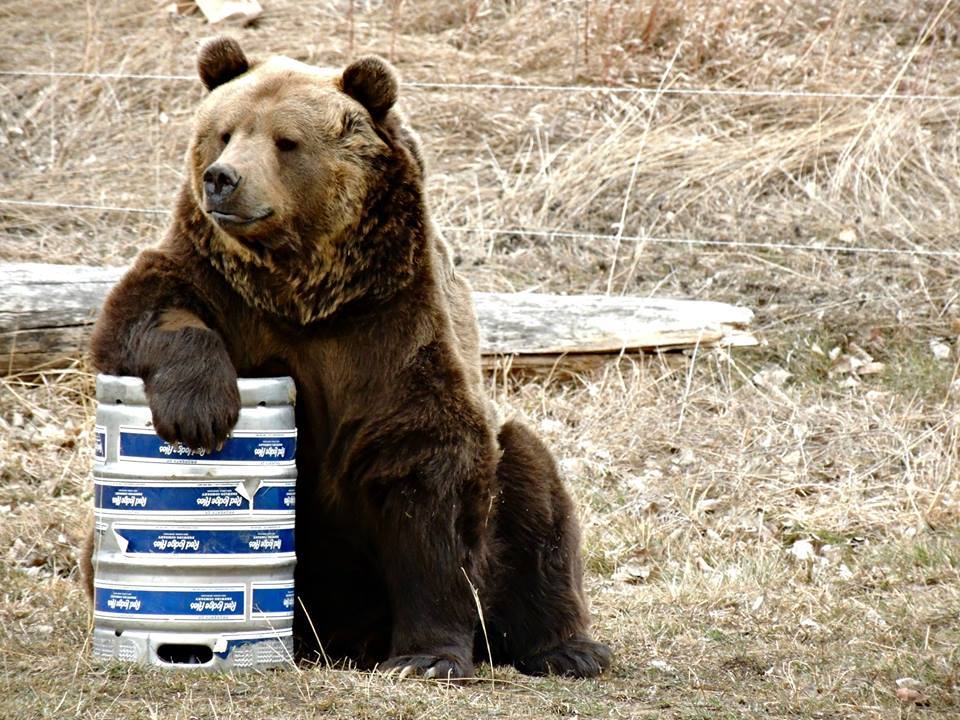
Saving Ozzie & Bruno’s home
Conservation Districts work together to restore streambank and protect Grizzly Bear enclosure at Zoo Montana.
Written by Jeff Ryan, Lewis & Clark CD, with input from Jeff Ewelt, Director ZooMT; LaVerne Ivie, Administrator Yellowstone Conservation District; and Matt Johnson, PE CFM RESPEC.
Recently I had the opportunity, representing my Lewis and Clark Conservation District, to travel to Billings several times to play a small part in a “big” project. Well maybe the project site wasn’t so big. It was only about 65 feet of an eroding bank on Canyon Creek in the ZooMT complex, but to to Ozzie and Bruno, the Zoo’s resident grizzly bears, it was a very big deal. The eroding bank was literally up against their enclosure, threatening their home.
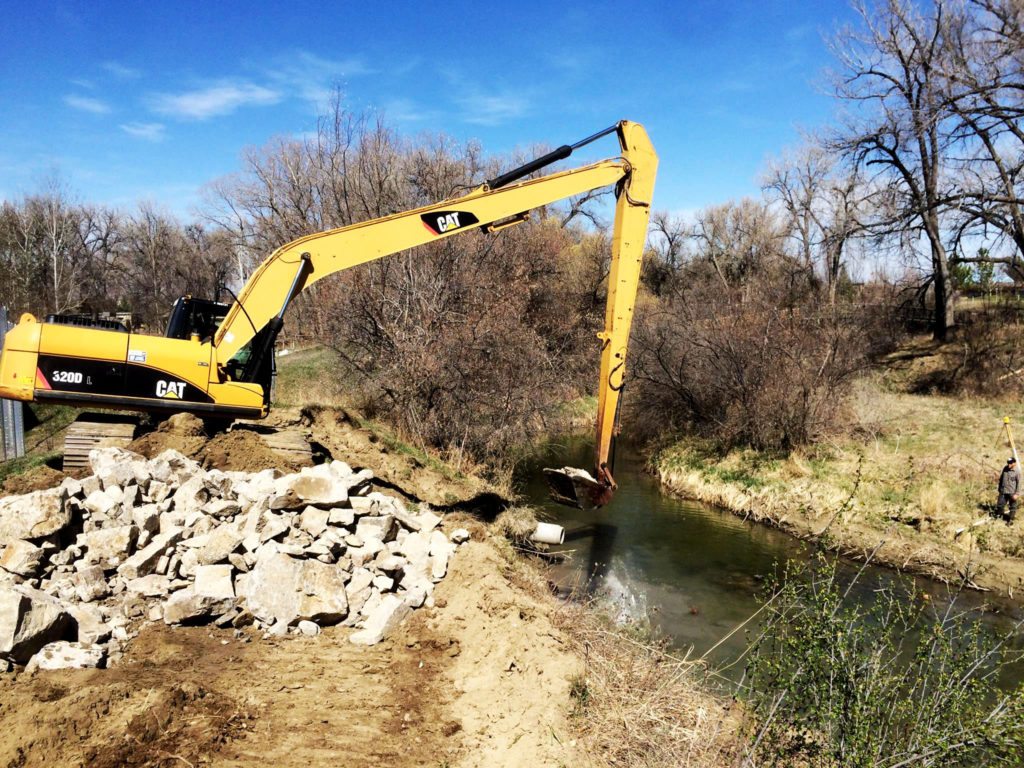
An upstream reservoir had failed and the subsequent flush of water down Canyon Creek blew out a clump of trees that contributed to the erosive forces that tore out the stream bank in front of the bear’s home. Moving the bears was an option, but The Zoo, having just successfully come through some tough financial times, didn’t didn’t have the resources to build the bears a new home. Unfortunately, they also didn’t have the resources to restore the eroding bank.
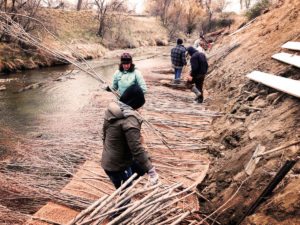
Luckily, they had developed a good working relationship with their local Conservation District. The Yellowstone Conservation District, like many districts, is well versed in coordinating collaborative projects that not only bring in grant monies but muster support for projects that contribute to conservation of resources. In this case, they not only were they instrumental in restoring the stream bank but were able to use the project as a demonstration site for an alternative to traditional bank stabilization techniques that would usually have involved the use of riprap. Last year the Zoo had 100,000 visitors, so this demo site will be viewed by many.
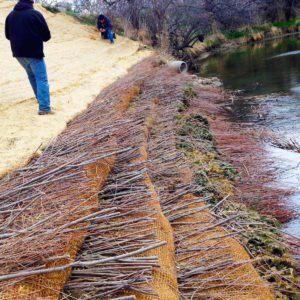
The alternative design selected was the use of willow soil lifts. The technique is relatively new to Montana but has been used successfully on thousands of feet of Montana’s rivers and streams in recent years. The technique lends itself to hands on efforts by local volunteers to help cut willow and install them. Over 2000 willow were cut and installed. Dozens of Christmas trees were bundled together to form what is called a fascine. The facine is installed in front of the willow soil lifts to protect them from the energy of flowing water. Other material costs are minimal as is machine time to prep the bank and build the soil lifts. The week before the project went in we were also able to conduct a workshop in Billings, attended by over 40 participants, to provide details on issues and techniques associated with bank restoration and techniques.
So, in closing, the real “big” part of this project was the collaboration of all the following partners that worked on this project most providing considerable voluntary efforts (my apologies to any I’ve missed):
- ZooMT—main project proponent, overall project coordination
- Yellowstone Conservation District major project coordination, grant acquisition, willow cutting/installation
- Lewis and Clark Conservation District/Big Sky Conservation Corps—technical oversight, willow cutting/installation
- Montana Fish, Wildlife and Parks—willow cutting/installation
- RESPEC—design, grant acquisition, willow cutting/installation, construction oversight Rocky Mountain College willow cutting/installation
- Montana Department of Environmental Quality—319 grants, willow installation
- Soil and Water Conservation Districts of Montana—minigrant
- Donnes Construction—construction with major contribution of voluntary work
- Montana Water Center—workshop coordinator
- State and Federal permit folks—timeliness and flexibility in permitting
- Montana Conservation Corps—fascine construction and willow handling
- Other volunteers —there were many


